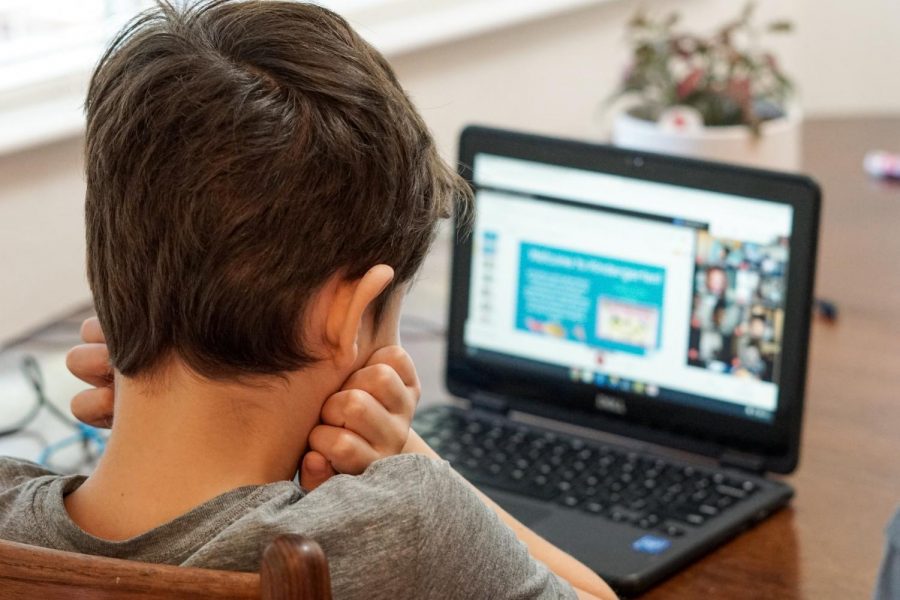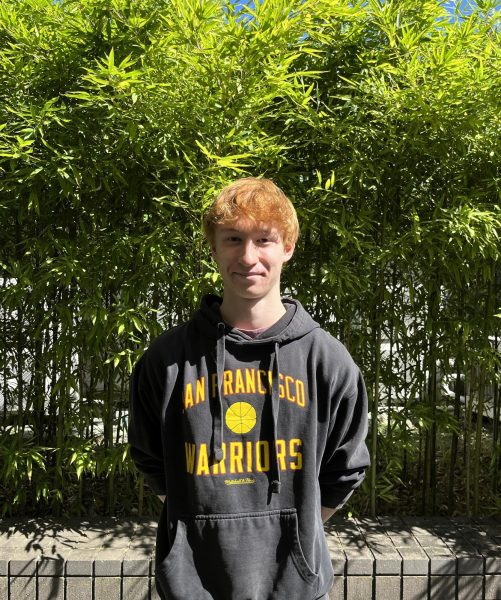Distance versus Off-Campus: ASIJ’s Evolving Online Learning
February 1, 2021
When I clicked through my Edsby page from the 2019-2020 school year, I was surprised at how foreign it seemed to me. Links to lists of assignments, videos explaining instructions for the day… for many classes, face-to-face meetings seemed to be cast to the sidelines. Now, it seems that meet.google.com is my most visited website.
The reason that I ended up looking back on my old Edsby classes was because of an email sent out to students and parents on January 9. This January 9th email was a message from Bob Noddin, Chair of the Board of Directors and Trustees for ASIJ, officially notifying the ASIJ community of the shift to full-time Off-Campus Learning. It also included answers to FAQs. FAQ number 2: “Why do we distinguish between Off-Campus Learning and Distance Learning?“
First, Mr. Noddin noted that these few weeks of Off-Campus Learning were meant as an “interim solution,“so he was committed to setting a distinction between the two models. “Distance Learning has a different history and a slightly different set of guidelines for teachers, which is why we do not want to use that term to describe what our MS and HS students will experience for the next two weeks,“ he wrote.
The distinction of the two models can be traced back to ASIJ’s Distance Learning Plan (DLP). The document, as you may remember, was first released in the early months of 2020 before students initially entered Distance Learning. It was subsequently updated in May to reflect on the previous few months of Distance Learning.
In a section titled “Clarity over Creativity,“ the DLP explains, “We allowed space for teachers to try differing approaches. This approach did lead to teacher experimentation in organization and strategies, but the lack of clear, consistent guidelines also took a significant amount of time and energy.“
The DLP also emphasizes “human connection,” noting that “The need for human connection was even greater than we anticipated when we developed our original DLP in February 2020.“
The DLP is not a complete outline of what students and faculty know today as Off-Campus Learning, but it set a foundation for the current model. The points about human connection and consistency in teaching methods appear today in an online learning model that seems to more closely resemble an on-campus school day.
Noa Brown, a sophomore at ASIJ, said the organization of Off-Campus Learning has been a positive change for him. “It’s a lot easier to get your work done with the Meets,“ he said.
“You know at the end [teachers] are going to check. They’re going to keep you accountable,“ Noa added, also mentioning that specific policies such as requiring the use of cameras are helpful to keep students on track.
When asked for his opinion, Shaan Shah, a freshman, said, “I just want to have full Distance Learning without any classes or meetings and just work because I feel like, during the classes, they assign us work and it is just adding an extra step.“
Eleventh grader Roshan Sadhu feels, “There needs to be a balance.“ “Having that ability to control when you want to do work and when to do it; that requires a lot of organization and responsibility that we [high-schoolers] might not be best fit for yet.“ But Roshan also said the Off-Campus model had left him quite “burnt out“ after five days of only online classes. “There is a lot of unnecessary meeting time that could be cut.“
As full-time Off-Campus Learning has come to a close and a sense of “normality“ returns, we may not see many changes to the online learning structure very soon. The world has learned, though, that conditions can change in an instant, so the need for a more permanent online solution may arise.





















Hiroki Kurata • Apr 30, 2021 at 2:49 PM
Hello Ren, I learned a lot from your paper about the difference between distance learning and off-campus learning. While reading your paper, I was curious about your opinion on the the ideal online learning experience, and what you think the ideal balance is. How do you think we can meet the desire to cut down on wasted time, but at the same time have the same amount of responsibility? Keep up the good work!
– Hiroki
Susan Islascox • Apr 30, 2021 at 12:19 PM
Ren,
Your article is a helpful reflection for those of us who have experienced distance, hybrid, and face-to-face learning as well as a record for those in the future who may wonder about ASIJ life in the pandemic. Particularly, I appreciated reading the various perspectives of students across grade levels.
Best,
Ms. Islascox
Nadia Qazi • Apr 29, 2021 at 2:49 PM
Hi Ren, I really enjoyed reading your paper on how ASIJ’s online learning has shifted over time. I liked how you included the students’ opinion on what they thought of distance learning. One way to improve this article is to maybe consider what the teachers thought of Distance learning and Off-Campus learning. Great job!